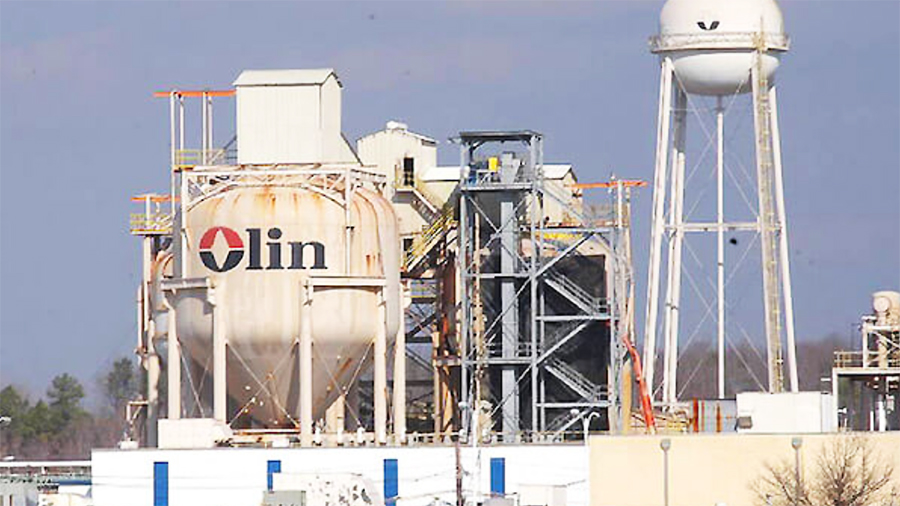Moody’s Investors Service upgraded Olin Corporation’s Corporate Family Rating (CFR) and the ratings on its senior unsecured debt to Ba1 from Ba2. These actions follow the improvement in its financial performance in 2021, along with a balance sheet debt reduction of $1.1 billion and the expectation for continued strength in its financial performance over the next several years.
Moody’s said its Speculative Grade Liquidity rating remains unchanged at SGL-1. The outlook is stable.
Olin is the parent company of the Winchester ammunition brand. It also operates two chemical businesses within its Chlor Alkali Products, Vinyl and Epoxy segments.
“Olin is benefiting from strong demand in North America and the company’s reduction of excess chlor alkali capacity in the US, which is keeping prices for the main commodities it sells at elevated levels,” said John Rogers, Moody’s senior vice president and lead analyst for Olin Corporation.
Moody’s said in its analysis, “Olin’s Ba1 rating reflects a limited portfolio of commodity chemicals and resins, access to lower-cost energy in North America that provides a meaningful cost advantage for its chlor akali operations, the expected volatility in prices and margins over the cycle, very strong liquidity and management’s relatively conservative financial policies that will keep credit metrics at investment-grade levels (i.e., leverage below 3.0x) most of the time. The rating is tempered by management’s growth strategy, which will likely entail additional downstream acquisitions that would reduce its merchant market exposure in chlor alkali and/or upgrade the product portfolio.
“Olin’s current financial performance is at peak levels given the strong demand in North America, tight market conditions in chlor akali aided by Olin’s shut down of excess capacity in the U.S. over the past two years, logistics issues that are limiting the quantity of lower cost-competitive products from Asia (primarily liquid epoxy resins or LER) and higher oil and energy costs, which will keep prices for many of the commodities that Olin produces at elevated levels over the next year or two. Due to these factors, credit metrics are unusually strong, with Moody’s adjusted Debt/EBITDA for the LTM period ending 31 March 2022 at 1.4x and Retained Cash Flow/Debt at 54 percent. Prices for the vast majority of Olin’s products are likely to remain elevated in 2022 and into 2023 at a minimum. Hence, this strong financial performance will keep credit metrics at levels much stronger than the assigned rating.
“While Olin struggled to reduce debt after acquiring chlor-alkali assets from Dow Chemical from 2015 to 2021, management significantly reduced debt in 2021 as its financial performance improved. Olin reported $2.8 billion of balance sheet debt at 31 March 2021, down from $3.9 billion at 31 December 2020, reducing debt by more than 25 percent. This debt reduction will substantially improve the company’s resilience during future macroeconomic and/or commodity downturns and ensure that credit metrics remain at levels that fully support the rating except in a severe economic downturn. Given Olin’s strong financial outlook over the next two years, the cash it generates should provide meaningful financial flexibility to undertake acquisitions to improve the company’s vertical integration and help reduce volatility in financial performance over the cycle and increase shareholder returns.
“The Ba1 CFR is constrained by the limited portfolio of commodity products that have demonstrated significant volatility in margins and profitability. The rating also reflects the longer-term risks associated with environmental and social risk factors. Olin’s current chlor alkali strategy will keep profitability elevated over the medium term. However, it will also encourage PVC producers to build new chlor alkali capacity when they bring on new PVC capacity. As PVC demand is growing faster than chlor alkali demand, this will reduce Olin’s market position over time. Hence, additional downstream integration would positively affect its competitive position and credit metrics over the long term. This downstream integration should also reduce volatility over the longer term.
“The SGL-1 Speculative Grade Liquidity rating reflects expectations for continued strong financial performance and cash flow in 2022. Olin’s liquidity is supported by roughly $200 million of cash on hand at 31 March 2022, and an undrawn $800 million revolving credit facility with almost full availability (modest level of letters of credit outstanding). The company has a $200 million maturity in August of 2022 but no significant other cash outlays. The expected cushion of compliance under financial maintenance covenants (including a net leverage ratio test and interest coverage ratio test) will remain substantial in the current environment.
“The stable outlook reflects the anticipation that Olin’s will undertake acquisitions to improve its portfolio and improve its long-term organic growth prospects.”
Photo courtesy Olin Corporation
















